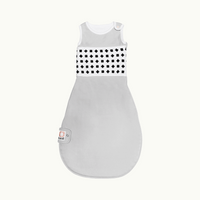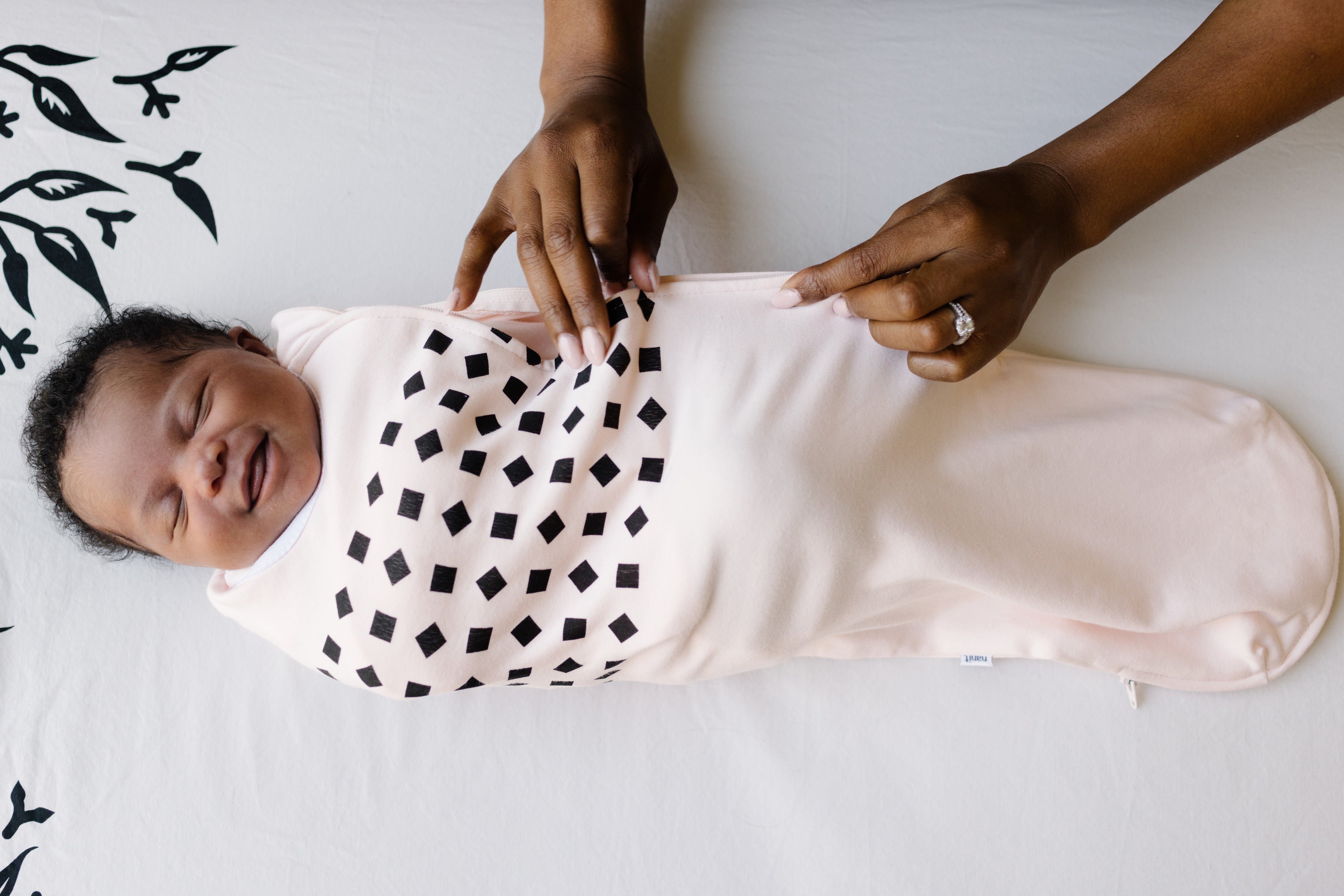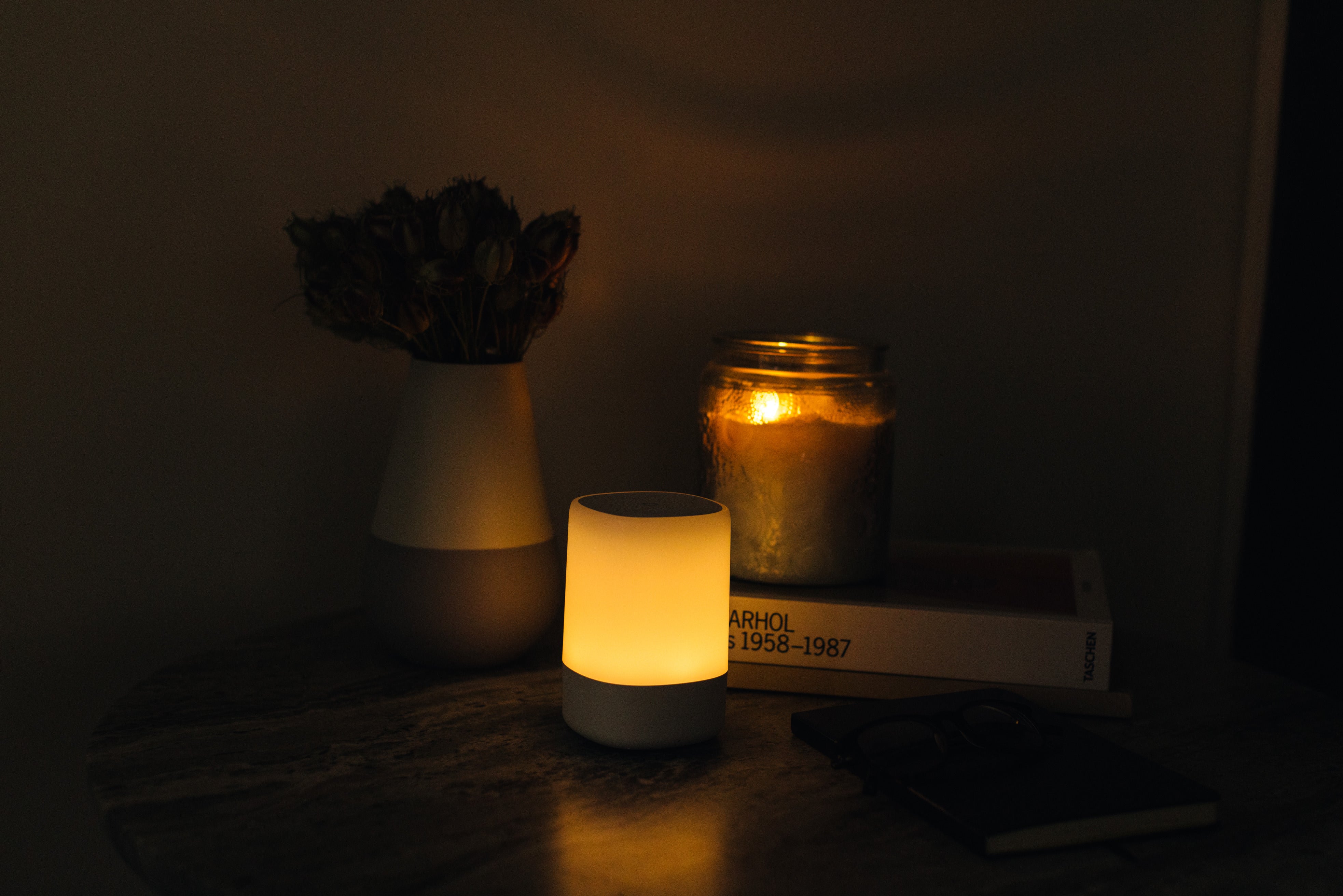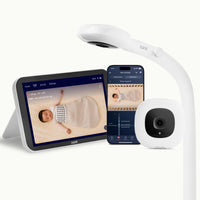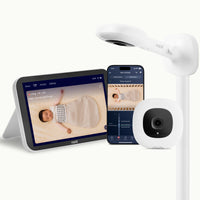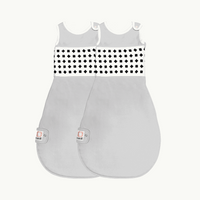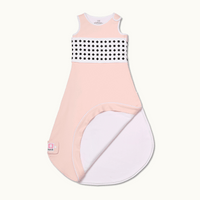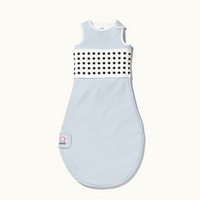Reviewed by Nanit Lab's Dr. Natalie Barnett.
After nine months of waiting, you finally get to meet your little bundle of joy! While this is an exciting and beautiful time, your body did (and continues to do) major work to bring your little one into the world. And after all the chaos of delivery, you may wonder what recovery looks like after your baby’s arrival. While the postpartum recovery timeline varies depending on a number of factors, there are a few general changes to expect as you heal.
Postpartum recovery time overview
There are a few postpartum milestones to keep an eye out for to ensure your body is healing properly. This can include gradual pain reduction, post-delivery bleeding, and improvements to changes in your hair, sweat, and skin. You can also expect some emotional fluctuations after giving birth. These are all perfectly normal and expected after delivery, both vaginaland by C-section.
As you adjust to your body post-birth, remember that a recovery timeline differs from parent to parent. Your recovery timeframe will depend on a number of factors, such as type of delivery and whether anything unexpected occurred during delivery. In addition, your body is adjusting to milk production and maybe breastfeeding, and oh yeah—that whole I’m a parent now whirlwind! Communicate with your doctor if you have any questions, and remember: Your recovery doesn’t have to look like someone else’s to be right for you and your newborn.
What physical changes can you expect postpartum?
Your body takes some time to physically readjust after delivery. It just went through a lot to support and nourish your baby. Be kind to yourself. All of these changes are perfectly normal! You can expect any of the below to happen while your body gets used to post-birth life.
-
Cramping. As your uterus contracts back to pre pregnancy size, you might feel cramps that some call “afterpains.” These last for a few days and up to two weeks after birth.
-
Unpleasant discomfort and sensitivity. If you had a vaginal birth, you’re likely going to be in pain for a few weeks after delivery. The same goes for your incision site if you had a C-section. The right aftercare can help soothe these sensitive spots. Witch hazel pads and ice packs (aka “padsicles”) are two ways you can alleviate the discomfort from a vaginal delivery.
-
Postpartum bleeding. Vaginal bleeding is normal after vaginal deliveries and C-sections, and will taper off like a period as time goes on. If you had a C-section, there may also be some drainage from the incision, which lessens as you heal.
-
Sleep changes. If you’re tossing and turning more than you did pre-pregnancy (or even during third-trimester insomnia), that’s because your progesterone and estrogen levels drop while prolactin and oxytocin levels rise. These fluctuations can mess with your sleep cycle—and that’s on top of your baby’s regular nighttime feedings!
-
Sweat and other body changes. As your hormones balance out post pregnancy, it’s common to experience temporary acne, to sweat a little more, or for your hair to thin a bit (or even a lot). It’s not Puberty 2.0—they’re signs your body is adjusting to no longer supporting the constant needs of a fetus. These changes can last for a few months, or even up to a year, as your body readjusts.
-
Breast changes. As your milk comes in, you may experience swelling or light nipple discharge in the first two weeks postpartum.
- Changes in how you go to the bathroom. Your recovering pelvic floor may need some time to get used to this typical routine.
4 Postpartum physical care tips (from our experts!)
- Prioritize your fiber intake: Consuming high-fiber foods like dried prunes, fiber-rich crackers, mixed nuts, and apples can help ease your first bowel movements after delivery.
- Stay hydrated: Drinking plenty of water can also help prevent constipation.
- Don't shy away from medication: If you still experience discomfort, consider over-the-counter options such as Miralax or stool softeners. Always consult with your healthcare provider before starting any new medication.
- Consider baby wipes: Regular toilet paper may feel too harsh for your sensitive skin after giving birth. Baby wipes can offer a gentler alternative for those first few bowel movements. Just remember not to flush them!
Remember, your comfort and health are important during this period. Listen to your body and seek medical advice if needed.
What emotional changes can you expect postpartum?
Postpartum fluctuations in hormones affect your mind, too. Everything you’re experiencing is not just common, but typical. Most people go through some version of the “baby blues” after delivery.
If you’re experiencing any of the below emotional changes postpartum, it’s important to know that you’re not alone. Asking for help when you need it is important-–and encouraged. You or a loved one can find online forums or support groups that can help direct you to the right resources.
Keep an eye out for the following emotional changes after delivery:
-
Mood changes. With so many hormonal changes and lack of sleep, it’s no wonder you might feel out of sorts. Some parents notice the third postpartum day is particularly difficult, as some hormones plummet, others spike, and post-birth bliss fades while the realities of childcare settle in.
-
Struggling to focus. Postpartum fatigue is no joke between the radical change in your schedule and general lack of sleep, so it’s unsurprising that it can greatly affect your ability to concentrate. If you’re feeling foggy or struggling to pay attention, this isn’t unusual at all.
-
Anxiety. You’re entering a brand new stage of your life while caring for a newborn and trying to balance your own physical and emotional needs. Anxiety is a perfectly normal response to all these major life changes! According to Postpartum Support International, over 20% of birthing parents experience anxiety, so you are far from alone.
- Sadness. Feeling a little blue after this exciting, but undoubtedly significant life change is understandable. These hormonal changes are linked to postpartum depression.
If you think you may have postpartum depression, the first step is to speak with your primary care physician,your OB/GYN, or a mental health professional. There are also community resources, like Postpartum Support International and the Nanit Community, that can help.
Taking care of your health postpartum
First and foremost, treat yourself with care. Healing takes time. No two pathways are alike; your needs can differ from others, and that’s absolutely OK.
As you find the best routines to care for your body and mind postpartum, here are our tips for some helpful routines that can help physically and emotionally, as well as tips for supporting partners and loved ones.
How to care for your postpartum physical health
Taking care of the basics as much as you’re able to can help your physical recovery along. Rest when you can, try to stay hydrated, and aim for nutritious meals and snacks with lots of fiber to keep things moving along.
There are also some soothing tools you can use to ease any lingering pain.
- Balms and creams can help ease nipple soreness, such as the HATCH Collection Nipple + Lip Rescue Balm
- Try a warm sitz bath or “padsicles” soaked in aloe or witch hazel to reduce swelling and discomfort in your perineal area (you can even buy them premade!)
- You can also use Mommy Matter's NeoHeat Perineal Heater to provide recovery after childbirth, which you can check from Mommy Matters Soothe + Heal Bundle
- If you had a C-section, prioritize keeping the incision clean
And as always, if you have questions or concerns about any of your postpartum symptoms, reach out to your doctor.
How to care for your emotional health postpartum
Part of supporting your postpartum mental health involves some of the same steps you’d take for your physical recovery. Rest and good nutrition impact your mood, too.
Your doctor may recommend supplements to help balance your mood and energy. Clinical studies on omega-3 fatty acids and Vitamin D3 in particular can help support brain health.
You may also be able to find motherhood or parenting support groups to talk with others who are going through the same thing. Having a community around you can make some of the emotional changes easier to process. And just like with your physical recovery, it’s OK to seek mental health help.
Key takeaway: Sleep and postpartum recovery
Sleep is one of the key foundations to your health and wellness. There are strong associations between parent sleep and the incidence of PMADS (such as postpartum depression and anxiety). Try tools like dimmed lights and white noise before bedtime to wind down and create an optimal sleeping environment.
Lean on your parenting village when possible to help you get more rest—research shows that when partners are involved in nighttime infant care, postpartum mothers tend to have better sleep. In a study of 506 mothers, those with partners sharing or taking over night care duties slept approximately 20 minutes longer than mothers without such help. This longer sleep duration was significantly associated with lower depression scores.
How partners and loved ones can help with your postpartum recovery
A good support system is essential to helping you through the postpartum emotional ups and downs. There’s no set-in-stone checklist of tasks your partner, a family member, or a friend should undertake as you recover. What’s most important is that you communicate your needs and that you feel supported physically and emotionally, which looks different for everyone.
Some ways your loved one can help with postpartum recovery include:
- Taking on night feedings so birthing partners can get some uninterrupted sleep
- Helping out with household chores you don’t like to tackle
- Encouraging you to take care of yourself whenever possible
What could a postpartum recovery timeline look like?
Here’s generally what to expect each step of the way with your recovery. Keep in mind, though, that everyone’s timeline looks different. If you have specific questions about your postpartum recovery, bring them to your primary care physician or OB/GYN.
A few days postpartum
Since it hasn’t been long since you’ve given birth, it’s time to take it easy. Follow all of your doctor’s aftercare instructions, including how much you should move around and what physical activities you can do. You might notice your emotions change as your hormones begin to readjust to your postpartum body. If you had a C-section, your doctor may recommend light walking to help support healthy circulation.
Two weeks
You can expect bleeding to decrease around two weeks postpartum, although you’ll still ache if you had stitches. You’ll likely gain some mobility as well, even if you’re not back to full mobility just yet. And fluctuating hormones are still flooding your system, so mood swings are absolutely normal at this recovery stage.
Three to four weeks
This is where you may start to ease back into more daily activity. If you feel strong enough and your doctor says it’s alright, you may be able to start low-impact exercise. Bleeding has also likely decreased or stopped entirely around this time.
Five to six weeks
This is usually when birthing parents are medically cleared to fully resume normal activities. If you haven’t started any movement yet, you may be able to now. By this stage, you might be able to resume lifting heavier objects if you had any limitations after a C-section delivery.
Your doctor may also tell you it’s now safe to resume sex (you might not be thinking about that right now). But just because you’ve hit this mark on the timeline doesn’t mean you have to do anything before you're ready. Continue to take everything gradually, one step at a time.
Seven to 12 weeks
By now, you may be back to your previous physical activities and routine. But self-care is still extremely important here. If you’re exercising again, stay hydrated and take postpartum vitamins to support your continued healing.
Some parents experience hair loss around four months postpartum, and this is totally normal. During pregnancy, your body suspends the natural daily hair loss process that happens in the shower or when brushing your hair. The temporary hair loss at this point in the timeline is just your body rebalancing things.
Supporting your peace of mind as a new parent
In the whirlwind of postpartum recovery, prioritizing your baby's safety and your own peace of mind is key. Baby monitors can support you in this new journey by providing peace of mind.
A baby monitor with camera allows you to keep a watchful eye on your baby's well-being without having to leave your bed, especially during those times when rest is a precious commodity. Smart monitors like the Nanit Pro Camera offer practical features like breathing motion monitoring and developmental insights, such as tracking your baby's head and body pose while they sleep.
Consider a baby monitor as a helpful tool to support your postpartum journey, allowing you to focus on your recovery and savor the special moments with your newborn, knowing that their well-being is always within reach.
Take postpartum recovery gradually and with care
Just like with your pregnancy, it’s always helpful to be equipped with plenty of information. Having a general idea of what to expect in your postpartum timeline can help you prepare. Take each step of recovery slowly and give yourself time to heal—not to mention soak up all the joy of new parenthood! Of course, you know your body best, so if questions arise for you, reach out and ask your doctor what’s up.
About Dr. Natalie Barnett:
 Natalie Barnett serves as VP of Clinical Research at Nanit. Natalie initiated sleep research collaborations at Nanit and in her current role, Natalie oversees collaborations with researchers at hospitals and universities around the world who use the Nanit camera to better understand pediatric sleep and leads the internal sleep and development research programs at Nanit. Natalie holds a Ph.D. in Genetics from the University of New England in Australia and a Postgraduate Certificate in Pediatric Sleep Science from the University of Western Australia. Natalie was an Assistant Professor in the Neurogenetics Unit at NYU School of Medicine prior to joining Nanit. Natalie is also the voice of Nanit's science-backed, personalized sleep tips delivered to users throughout their baby's first few years.
Natalie Barnett serves as VP of Clinical Research at Nanit. Natalie initiated sleep research collaborations at Nanit and in her current role, Natalie oversees collaborations with researchers at hospitals and universities around the world who use the Nanit camera to better understand pediatric sleep and leads the internal sleep and development research programs at Nanit. Natalie holds a Ph.D. in Genetics from the University of New England in Australia and a Postgraduate Certificate in Pediatric Sleep Science from the University of Western Australia. Natalie was an Assistant Professor in the Neurogenetics Unit at NYU School of Medicine prior to joining Nanit. Natalie is also the voice of Nanit's science-backed, personalized sleep tips delivered to users throughout their baby's first few years.
















